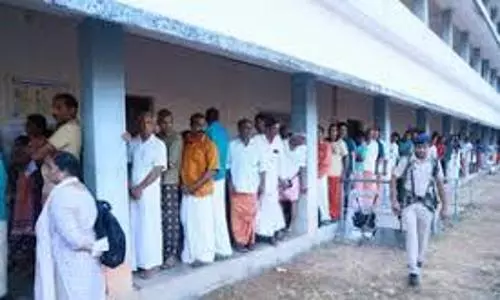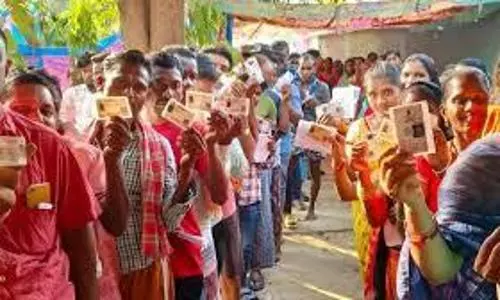
This is nothing but anti-people
text_fieldsAfter a gap of two years, power tariff has been raised again in Kerala. As usual, this time too the Electricity Regulary Commission has presented the new tariff imposing huge burden on domestic consumers and patting big time users on the Together with the hike per unit charge by 25 to 40 paise, the monthly fixed charge has also been steeply raised. While the charges for orphanages, old age homes and anganwadis have been increased and fixed charge newly imposed on them, private hospitals and commercial establishments have been exempted from the hike. Not only that, tariff reduction has also been declared for some of these categories. Through the hike overall, KSEB is estimating an additional revenue of Rs 962 crore.
Given that out of this figure Rs 538 crore has to be borne by domestic consumers, one cannot help observing that this will be a blow on the common man's budget, which has already been upset by the recent fuel price hikes. Domestic consumers stand to pay an average of 11 per cent of the existing price. It may be raised as a specious argument that the tariff hike approved by the Regulatory Commission, has been lower than what was suggested by KSEB and that compared to other states, Kerala's power tariff is lower. But that does not justify the act of draining the common man's pocket. Add to it the further jolt of power cuts looming large in the state.
The tariff hikes by KSEB from time to time is always taken as a step to save up the state entity from acute financial crisis. And this is the fifth hike in the last eight years. During the previous UDF government, tariff was hiked by 40 per cent in three stages. Even then, when the Oommen Chandy government left office, the liability of the Board had risen from Rs 1,300 crore to Rs 7,000 crore. And the Pinarayi government that succeeded it, has again proposed tariff hike as the way to tide over the Board's financial crisis.
The current government hiked the charges by 4.7 per cent in April 2017, and now by 6 per cent overall. Which means, over the last eight years, Kerala has seen a 50 per cent rise in power tariff. Still there is no major relief from the debt liability of the Board. In fact the governments that come and go have been putting the financial burden of KSEB on the shoulders of the common man. And that is where the 'justification' that Kerala's power tariff is lower than other states, becomes a mere technicality. Even when the charges are lower, the rate of increase is far higher.
During 2015-17, the revenue loss of KSEB, as per the Regulatory Commission's report, was Rs 4,875.8 crore. The Report also answers the question how such a big loss results. The chief villain is the transmission and distribution loss, which is estimated at 15 per cent in the state. If we look at the price at which Kerala purchases electricity currently, this works out to a loss of Rs 1,300 crore. In other words, we will be able to make good this loss, only if we receive 12 per cent higher than the current volume of electricity. But our Electricity Board has not been paying sufficient or serious attention to this energy loss.
On all the occasions the board raised the power tariff at its whim, proposals were made that there should be steps to bring down transmission-distribution loss, but things have never moved in that direction. At the same time, to be fair, it has to be conceded that compared to earlier times, transmission-distribution losses have been brought down. The setting up of new sub-stations in Malabar area, where transmission loss is higher, and installation of more HT lines have all helped bring down energy loss. This is laudable. And it is no small achievement that during the current government's term, a capital investment of Rs 10,000 crore has been infused into the power sector. The pitiable fact then is that despite all those steps, when a tariff hike became inevitable, that burden has been imposed mostly on the common man.
The fact that KSEB has still to collect recoverable dues of Rs 2,000 crore, is also to be viewed seriously. Figures tell that by collecting existing arrears itself, the Board's financial burden can be reduced considerably. If arrears are efficiently recovered, tariff hike can also be avoided. The different departments of the government itself have to pay arrears to the tune of Rs 500 crore. Kerala Water Authority, for example, owes to KSEB Rs 100 crore against its power consumption.
Information gathered under Right to Information Act in January this year, states that arrears due from big-time consumers run to Rs 1,277 crore. That is to say, as done in tariff hike, KSEB is exempting big-timers from arrears collection too. Apart from the routine mention that the said arrears should be collected expeditiously, the Commission does not suggest any effective means of recovering those arrears. In short, it is when there are several options open to solve the financial crisis of Electricity Board, that the authorities zero in on the sole solution of tariff hike. And that can be called nothing but hurting the public.























